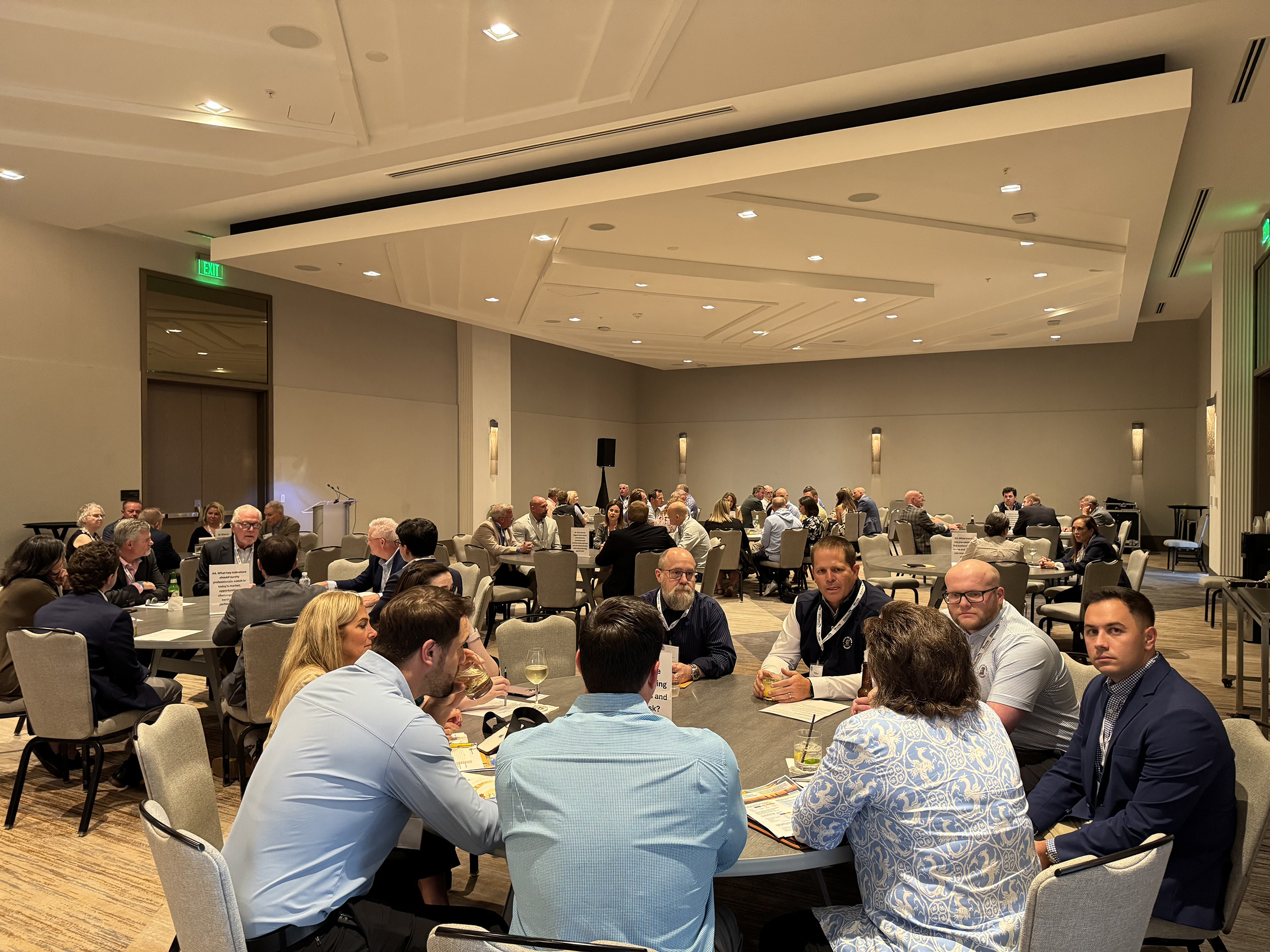
Green Building and Surety Bonds: Risk Allocation and Risk Management
The United States Green Building Council (USGBC) held its annual Greenbuild International Conference & Expo on October 4-7, 2011, in Toronto, Canada. The Expo included the second annual Legal Forum, which consisted of a half-day of presentations on issues of green building liability, insurance, surety, finance, and commercial and residential property transactions. On behalf of NASBP, I presented on the use of surety bonds on green building projects and appropriate methods for risk allocation and risk management. The following is a summary of my remarks at the Legal Forum.
The overarching purpose of the presentation was to clarify the role of sureties in green building projects. Construction industry stakeholders are often confused about the role of the surety on traditional construction projects. The industry stakeholders are often even confused as to the role of the surety on green construction projects. In part, this heightened confusion appears to stem, at least in part, from the more collaborative nature and shared goals found in such projects, including project goals of obtaining third-party certification, enhancing building performance, and reducing operational costs. From this perspective, participants may expect, however wrongly, that the surety plays an equally collaborative role underpinning the entire project and the obtainment of the global project goals.
Of the three main types of construction bonds – bid, payment, and performance bonds – the presentation focused on performance bonds and included a review of the some of the basics of surety bonds, namely, what they are and what do they do—and don’t do.
It is critically important for project participants to understand the basic purpose and structure of a performance bond. A performance bond sets forth a guaranty from the surety to the owner that the contractor will perform its obligations as detailed in the contract documents, including the plans and specifications. The performance bond is not intended to serve as a blanket guarantee of overall project performance. On the contrary, the bond provides an assurance of performance to the owner that the bonded contractor’s obligations will be performed. The surety does not guaranty project performance.
The narrower scope of coverage for performance bonds was echoed in a separate panel discussion on green building contracts from the perspective of the general contractor. There, the panel members stressed the need to clearly and thoroughly allocate the responsibilities of each of the project participants. The contractor generally will not accept responsibilities beyond those detailed in the contract documents and over which the contractor has control. In many instances, detailed checklists are used, allocating responsibilities on an item-by-item basis among the project participants. Further, in many instances the panel members noted that more than one project participant will be assigned responsibility for a project item. The need for such specificity is particularly true in green building projects where project certification and building performance are dependent on the collective services and work of the architect, the bonded contractor and other contractors, subcontractors, suppliers, and consultants and the owner’s use, operations, and maintenance of the project.
Additionally, the economics and risk assessment underlying performance bonds rule out a project performance bond. At the outset, the surety seeks to underwrite and evaluate the project properly so that ultimately there is no loss for the surety. Each performance bond is underwritten for a specific entity, not for the project or for all the project stakeholders. In determining whether to issue its performance bond, the surety company analyzes the contractor’s specific project obligations (including contract terms), financial status of the contract, work program, and experience, among other factors. The surety does not evaluate and agree to perform other project goals beyond those assumed by the contractor. In underwriting the performance bond, the surety starts with the view that there will be no loss, which should be the case, at least in theory, if the surety has properly determined that the contractor is both capable and qualified to perform the contract obligations. Moreover, the issuing surety requires security from the bonded contractor, and usually its principals and spouses, to indemnify and hold harmless the surety company from any loss, costs, and expenses incurred by the surety company as a result of having issued the bond.
Unique issues may arise for the surety in connection with green building projects. For example, it is highly problematic if the contractor agrees or is required to provide an overall project guarantee or a guarantee that a sustainable objective will be achieved when such items are the collective responsibility of multiple parties, e.g., the owner, architect, and contractor. Problems also arise where payment of the contractor is in some respect contingent on achieving a third-party certification. Traditionally, final payment of the contractor occurs at completion of the final punch-list items. Third-party certifications typically trail this point of time (often for more than one year), thereby requiring the contractor and its surety to bear the risk of non-payment or the filing of claims for an extended period. Both in jurisdictions where green certification is required and on projects where green certification is voluntarily sought, contractors may be asked to delay receipt of final payment until after the desired certification has been obtained. The contractor only has control over some of the steps necessary to achieve certification and, just like the bonded contractor, the performance bond surety should not assume responsibilities beyond the control of its contractor.
The failure to include a waiver of consequential damages in the contract documents could also presents significant issues for the surety. Such damages may include losses for failure to achieve third-party certification, unrealized energy savings, and missed tax incentives. A common thread connecting the above issues is the expansion of the contractor’s and the surety’s obligations beyond those items that the contractor may directly control. Development projects are too complex and require the involvement of a host of participants to look to the contractor (and its surety) as one project team member ultimately responsible for the overall project goals.
Green projects also present unique challenges for sureties, given the increasing requirements of governmental instrumentalities. As federal, state, and local jurisdictions continue to impose new green requirements for projects, sureties must guard against the expansion of their scope of liability. A prime example of this risk is present in the 2006 D.C. Green Building Act. Beginning in January 2012, the Act requires the posting of a performance bond that is in the nature of a forfeiture bond. Where a building fails to meet the verification requirements under the Act, all or a part of the bond may be forfeited to the District and deposited in the Green Building Fund. The Act does not specify whether the forfeited funds will be used to complete performance of the building contract or that other steps will be taken to ameliorate any deficiencies. Further, there is no connection between the forfeited amount and the damages associated with the failure in performance. Under the Act, it is possible that the forfeited amount may be many times greater than the actual loss resulting from the failure to perform. Also of concern is the absence of an appropriate risk mitigation mechanism or the ability to cure any performance issue before the bond is forfeited. NASBP and Surety & Fidelity Association of America have provided the D.C. Council and the District Department of the Environment (DDOE) with commentary on the need to modify the current bond requirement. It seems that the DDOE may be considering backing down from this requirement.
Developments in green building bear continued monitoring in connection with the requirements imposed on sureties and their contractors. While the issues in green building are not wholly different from many of the traditional concerns of risk management and risk allocation with which sureties are accustomed, green building projects do present new concerns that will need to be evaluated and mitigated. NASBP professionals will play a critical role in this process.
The author of this article is Edward U. Lee II, Esq., a Partner in the Baltimore, Maryland office of Whiteford, Taylor & Preston, LLP. He can be reached at elee@wtplaw.com.
This article is provided to NASBP members, affiliates, and associates solely for educational and informational purposes. It is not to be considered the rendering of legal advice in specific cases or to create a lawyer-client relationship. Readers are responsible for obtaining legal advice from their own counsels, and should not act upon any information contained in this article without such advice.
Get Important Surety Industry News & Info
Keep up with the latest industry news and NASBP programs, events, and activities by subscribing to NASBP SmartBrief.




